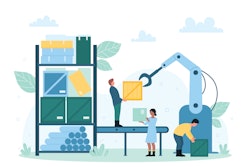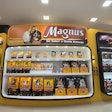
Just as sustainability can have many different meanings, the levels to which people embrace it in their lives can also vary considerably. “Sustainability and conscious consumption have become highly personal, leading consumers to adopt a sliding gradient of ‘green’ practices,” said NielsenIQ (NIQ) in an overview of its “Green Divide” report. “To bridge the gap between consumer intention and action, just knowing your target consumer wants to be ‘green’ is insufficient.”
Based on NIQ research, the report divided people into five segments: Skeptics, at 26% of global consumers, have low awareness of sustainability, and it’s low priority for them; idealists (18%) are passionate but struggle to practice their beliefs; minimalists (17%) have a basic awareness but low motivation; the “healthy me & planet” segment (20%) embraces sustainability with a focus on health, taking some action; and evangelists (19%) fully “walk the talk.”
For all five groups, NIQ said the biggest barriers to living more sustainably are cost of options, lack of choice or both. For pet owners, that’s where pet food and other product companies can come in. Many, if not most, are working diligently to make their products, processes and businesses more sustainable, but doing so is very complex. During a November 2023 Ask the Pet Food Pro Zoom chat, Brian Nash, vice president of corporate sustainability for ingredient supplier Ingredion, offered a path for navigating that complexity:
Talk to your suppliers. “They’re going to have a lot of information that you don’t, and you’re going to have a lot of information that they don’t,” Nash said. “And it’s really critical to bring those things together in a conversation so the suppliers know what you’re trying to do. We unlock a lot of potential when we get the right people in the room and have those discussions.”
Figure out what makes sense for your organization. “Don’t try to boil the ocean and do everything,” he cautioned. Start small, focusing on the things that bring value to your company, stakeholders and customers, then grow from there.
Follow the math. “Get data on what your consumers are willing to pay for; get some environmental footprint information,” Nash advised. “Look at what your investors are asking for, what your competitors or customers are talking about in this space, then start getting some data on your own operations to help you figure out what makes sense to work on and where to start.”
Most of all, once you’ve started your sustainability journey, be honest and transparent about your operations and metrics framework.

















